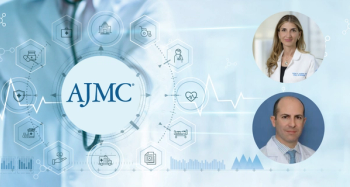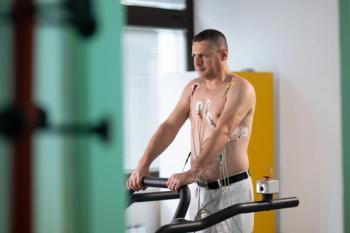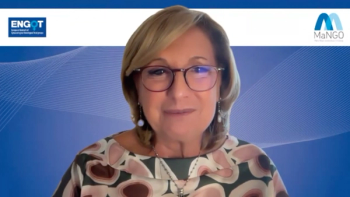
Oncologist Shares Lessons Learned From CAR T-Cell Therapy in ALL
On the closing day of the National Comprehensive Cancer Network (NCCN) 23rd Annual Conference in Orlando, Florida, Bijal Shah, MD, of Moffitt Cancer Center, presented on acute lymphoblastic leukemia (ALL), and on the lessons learned from the application of chimeric antigen receptor (CAR) T-cell therapy in this indication.
On the closing day of the National Comprehensive Cancer Network (NCCN) 23rd Annual Conference in Orlando, Florida, Bijal Shah, MD, of Moffitt Cancer Center, presented on acute lymphoblastic leukemia (ALL), and on the lessons learned from the application of chimeric antigen receptor (CAR) T-cell therapy in this indication.
First, said Shah, “Adult ALL doesn’t get enough attention, but it does account for nearly half of all the all cases that we see.” Adult patients with ALL are more likely to relapse, and their outcomes are typically poor, with an average survival of roughly 40%. “I think we have a lot of room for improvement there,” said Shah.
Allogenic transplant may help these patients, and while inotuzumab does improve overall survival, “it’s not easy to get excited” about long-term survival improvements of only small percentages. With blinatumomab, a T-cell directed therapy, “We did better than chemotherapy for a short while,” Shah explained; however, even with blinatumomab, long-term survival remains around 25%, “so we’re still having trouble getting past this hurdle.”
CAR T-cell therapies may provide an important improvement on these options. However, said Shah, after a patient has been identified as having relapsed refractory disease, the time it takes to manufacture a therapy can stretch from weeks to a month, and it can be difficult to keep the patient’s disease stable during this period. “We’re not taking as many patients” because of manufacturing time, he said, and some patients will become very ill before a drug product can be made.
In addition to the challenge posed by manufacturing time, data also show that adults had worse outcomes than children when treated with tisagenlecleucel,1 and “That’s disconcerting … as we decrease the age we see better responses.” This is discouraging for adult patients; “We are absolutely improving survival,” said Shah, but “Why do adults have to take the short end of the stick?”
Patients with higher tumor burdens also did significantly worse in trends, and patients who were more heavily pretreated (having received 4 or more lines of therapy) also had worse outcomes.2
Furthermore, toxicity is a significant concern with CAR T-cell therapies; severe neurotoxicity has been observed, though the mortality rate for these adverse events remains low, at around 2% to 3% across the approximately 230 patients studied so far, said Shah. Interestingly, ALL seems to have a higher rate of neurologic toxicity with CAR T than other cancers do, an observation that suggests that there are some disease features that are linked with adverse events (AEs). Adults with ALL appear to have even more neurotoxicity than younger patients.3 “I have no explanation for this,” Shah said.
Management of treatment-related toxicities is critical for patients with ALL receiving these therapies; among the toxicities of greatest concern is cytokine release syndrome (CRS). Tocilizumab is key to managing CRS, and it should be administered at the first signs of fever of hypotension or fever. Tocilizumab, it is important to note, will not help with neurotoxicity, and it is important to watch the patient closely for infusion-related reactions or infections.
If fever and hypotension do not resolve with tocilizumab, “my own personal bias is that more tocilizumab won’t help,” said Shah, who would resort to steroids in this case. “They’re bad, but they’re not that bad.” He urged clinicians not to be afraid to put a patient on steroids as long as they are willing to stop the course once CRS symptoms start to improve.
Cerebral edema is another challenging AE, and “the answer is nobody knows” why
In looking to the future, Shah says that off-the-shelf CAR T-cell therapies will be key to treating more patients, and that improving on current toxicities will be key. Finally, improving the durability of response will be necessary: “Post—CAR T relapse is going to be a big problem, and I don’t know how to solve it… We have to worry about the fact that response isn’t durable.”
References
1. Maude SL, Laetsch TW, Buechner J, et al. Tisagenlecleucel in children and young adults with B-cell lymphoblastic leukemia. N Engl J Med. 2018;378(5):439‐448. doi: 10.1056/NEJMoa1709866.
2. Park JH, Riviére I, Gonen M, et al. Long-term follow-up of CD19 CAR therapy in acute lymphblastic leukemia. N Engl J Med. 2018;378(5):449‐459. doi: 10.1056/NEJMoa1709919.
3. Gust J, Hay KA, Hanafi LA, et al. Endothelial activation and blood-brain barrier disruption in neurotoxicity after adoptive immunotherapy with CD19 CAR-T cells. Cancer Discov. 2017;7(12):1404‐1419. doi: 10.1158/2159-8290.CD-17-0698.
Newsletter
Stay ahead of policy, cost, and value—subscribe to AJMC for expert insights at the intersection of clinical care and health economics.













































